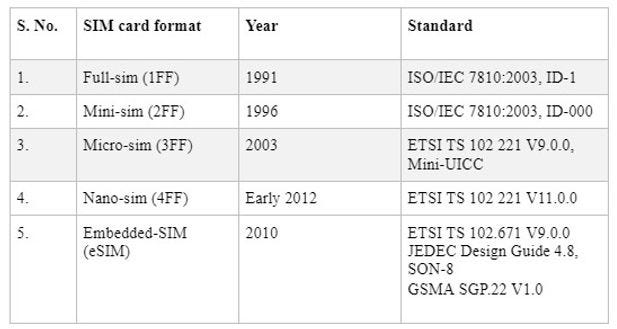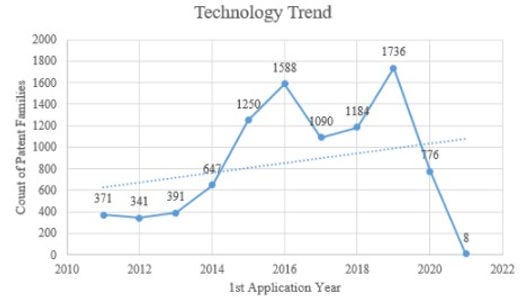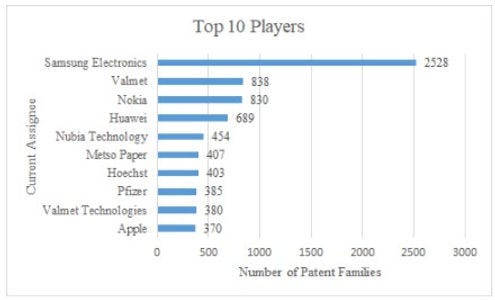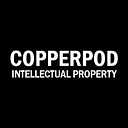Is Embedded SIM (eSIM) a Solution For IoT Devices?
Is Embedded SIM (eSIM) a Solution For IoT Devices?
A subscriber identity module or subscriber identification module, popularly known as SIM card was invented in 1991 in Munich by a SIM card maker Giesecke & Devrient. It is an integrated circuit chip that is intended to securely store the international mobile subscriber identity (IMSI) number and key related to it. Both of these IMSI numbers and keys are used to identify and authenticate subscribers on mobile telephony devices such as mobile phones, tablets, and computers. SIM cards these days are also used to store contact information. Talking about the technical specification of the SIM card, it usually has a unique serial number (ICCID), IMSI number, security authentication and ciphering information, temporary information related to the local network, a list of the services the user has access to, and two passwords: a personal identification number (PIN) for ordinary use, and a personal unblocking key (PUK) for PIN unlocking. The SIM cards were firstly sold to Radiolinja, which was a Finnish Wireless Network operator. In 2017, the SIM card market was valued at 3440 Million USD and is expected to grow to 3620 Million USD by 2025.
But in today’s modern era, there are some machine-to-machine (M2M) applications that require no change of SIM cards whatsoever. This provides an advantage to many electronics device manufactures, to avoid including SIM connectors in their products, and thus an embedded SIM or embedded universal integrated circuit card (eUICC), popularly known as eSIM was invented. This provides manufacturers with the profound advantage of not only reducing the design complexity of their products but also provides greater reliability and network security. Rather than putting a SIM card externally, an eSIM is an integrated part of the design of the product, and end-users can add or remove operators without the need to physically swap a SIM from the device and it provides all the services and subscriptions which are provided by traditional removable SIM cards. The eSIMs are also standardized by recognized industrial bodies such as GSMA, ETSI, Global Platform, and SIMalliance. At present, there are more than 200 network operators which have or are planning to launch eSIM services, which covers 90 countries over 5 continents. According to a research study, eSIM enabled smartphone shipment will be doubled from 255 Million units in 2020 to 781 Million in 2021.
eSIM Compliant Products

How Does SIM and eSIM Work?
Before we know how an eSIM works in a general use case scenario, let’s take a look at how physical SIM works. Let’s just take an example here, Alice just bought a mobile phone that connects via physical SIM. Following are the steps through which it would work:-
- Alice would firstly choose a company as a carrier and choose a plan from it.
- The carrier will send her a physical SIM card with their network-specific data stored in it.
- Alice then puts SIM into her mobile phone and installs it into the phone.
- The phone will use data stored on the SIM to connect to the carrier.
If Alice wants to switch her carrier, she would remove the SIM from her phone and put it into her phone again and install it into her phone.
The carrier data is stored on the physical SIMs and devices need that data to access the network. On the other hand, eSIM is just another SIM card with empty data slots i.e. pre-installed and embedded in the device itself. Instead of using a physical SIM to send the data required to connect to the network, the carrier can send that data over the internet, which the eSIM can use. Let’s see how it will work in the case of Alice if she purchases a device with eSIM:-
- Alice will purchase a mobile with eSIM service in it and also picks up a plan that she likes and orders it to buy.
- The carrier will send her a QR code instead of sending a physical SIM.
- Alice will scan the code, activating the plan which triggers the next step.
- The provisioning system will send the SIM profile into an eSIM slot on her mobile phone. The SIM profile has the same data which is stored on the physical SIM.
Once it’s installed, the mobile phone will use the eSIM and data stored in that slot just like a physical SIM card. However, unlike physical SIMs, eSIMs can store the data for multiple carriers. For example, if Alice wants a different number for any specific purpose, she just has to download new plans on the same eSIM but in some different slot. In this way, she can retain both of her numbers without removing any SIM cards.
The physical SIM comes with different standards which are discussed below. The standards vary from Full-sim which was introduced in 1991 to the Nano-sim in early 2012.
Industry standards

The standards vary from Full-sim which was introduced in 1991 to the Nano-sim in early 2012. The size of the physical SIM also decreased from the Full-sim to Nano-sim. Finally, the eSIM was introduced in 2010.
Advantages of eSIM
- The onboarding experience is very friendly and straightforward for end-users. The eSIM allows an electronic device to be used as soon as it is switched on.
- The end-users can also pick up a local prepaid phone number while traveling abroad as eSIMs are rewritable and thus, avoids premium roaming charges.
- Logistics and support for service providers are simplified as there will be no more SIM cards to manage at the customer level.
- New business opportunities are being created for eSIM carriers, as eSIM is extending mobile connectivity to many new consumer-connected devices.
- New designs are more reliable, smaller, dust resistant, and waterproof.
Disadvantages of eSIM
- It’s not as easy to quickly switch devices. Right now, if your mobile device stops working, you can easily remove the SIM card from it and put it into another device, and use it. But this is not in the case of an eSIM. You have to wait until the device is repaired.
- You cannot hide your eSIM device. If a person is concerned about following his/her location movements then eSIM might not be a device for them
- Right now, eSIM functionalities are being provided by some of the top-end Bands and their products. No doubt, in some time it can get along with regular devices but users need to wait.
- Technical support for eSIM chip malfunctioning is not readily available at this point in time and also not in every location.
Likewise, every coin has two sides, every technology has its advantages and disadvantages. It’s up to the users if the disadvantages can be coped up and provides a great deal of services out of the advantages of the new technology. As the technology will evolve in the coming days, I think inventions will be made to eradicate or administer the disadvantages in a competent manner to make the user experience more friendly and I think in the upcoming years this technology will be seen on even regular phones rather than pertaining to expensive devices at this point of time.
Patent Analysis
- Technology Trend
Every technology is marked by the inventions made on it. Presently, there are 51,606 patent families which refer to eSIM or eUICC from which 11,407 being active and 40199 dead patent families. Below provided is a trend chart of the previous 10 years of how patent filing has changed on eSIM.

The first version of the standard was launched in March 2016 and subsequently followed by the second version in November 2016. This is marked by the rapid increase in the number of patent families filed in the year 2015 and keeps on increasing till 2016. With the evolution of technology and with every new standard, these trends are going to be changed every time when a new method or system has been introduced in this technology area.
- Top 10 Players

The chart above demonstrates the total number of patents assigned in the eSIM industry to different players in the market. With 2528 patents, Samsung Electronics is leading the chart by being the top player in the industry. Followed by this, Valmet ranks number 2 with 838 patents. Players like Nubia Technology, Metso Paper, Hoescht, and Pfizer are almost on the same level with less difference in the number of patents assigned to them. Apple (370 patents) lack the chart with the lowest number of E-waste management patents.
Conclusion
In 2018, over 360 Million eSIM based devices were shipped globally, which is expected to reach 2 Billion by the year 2025. These devices include mobile phones, tablets, digital watches, and IoT devices. Cellular connectivity is a core necessity of the mobile phone, like SIM, the market for eSIM will flourish in the coming years. This is marked by the number of devices shipped and the expected number of devices in upcoming years. Moreover, the market value of eSIM is also increasing every year. IoT, is covering most of the technical and non-technical fields in today’s world like agriculture, smart vehicles, global shipping, asset and vehicle tracking, etc., requires connectivity and eSIM chips are delivering what is required. With more enhanced security and reliability and providing the advantage of design flexibility to designers, eSIM technology is making its way in IoT also. With 5G making its way into the market, the user friendly advantage of eSIM cards described above in the article will add a boost to the infrastructure required for 5G standard services like IoT and M2M and will prove to be a game changer in the market.
References
- https://patents.google.com/patent/US9439062B2/en?oq=US9439062
- https://www.forbes.com/uk/advisor/mobile-phones/esims/
- https://bestphoneplans.com/blog/is-esim-right-for-me-pros-and-cons-of-esim-technology/
- https://www.thalesgroup.com/en/markets/digital-identity-and-security/mobile/connectivity/esim/what-is-an-esim
- https://www.podgroup.com/resources/insights/what-is-euicc/
- https://en.wikipedia.org/wiki/SIM_card
- http://www.three.co.uk/hub/sim-card-answers/#:~:text=Despite%20the%20complicated%20name%2C%20it's,PIN)%20to%20protect%20against%20theft.
- https://www.usmobile.com/blog/esim/
- https://www.gsma.com/esim/wp-content/uploads/2018/12/esim-whitepaper.pdf
Sukhjeet is a research analyst at Copperpod IP. He has a Bachelor’s degree in Electronics and Communications Engineering. His areas of interest are Wireless Communication, Internet of things (IoT), Embedded systems, 3D-Prototyping and Control and Automation.
Copperpod helps attorneys evaluate patent infringement and uncover hard-to-find evidence of use through prior art search, product testing and reverse engineering. Please contact us at info@copperpodip.com to know more about our reverse engineering capabilities.
Keywords: SIM, telecom, patents, eSIM, embedded SIM, IMSI, esim technology, smartphones, dualsim

